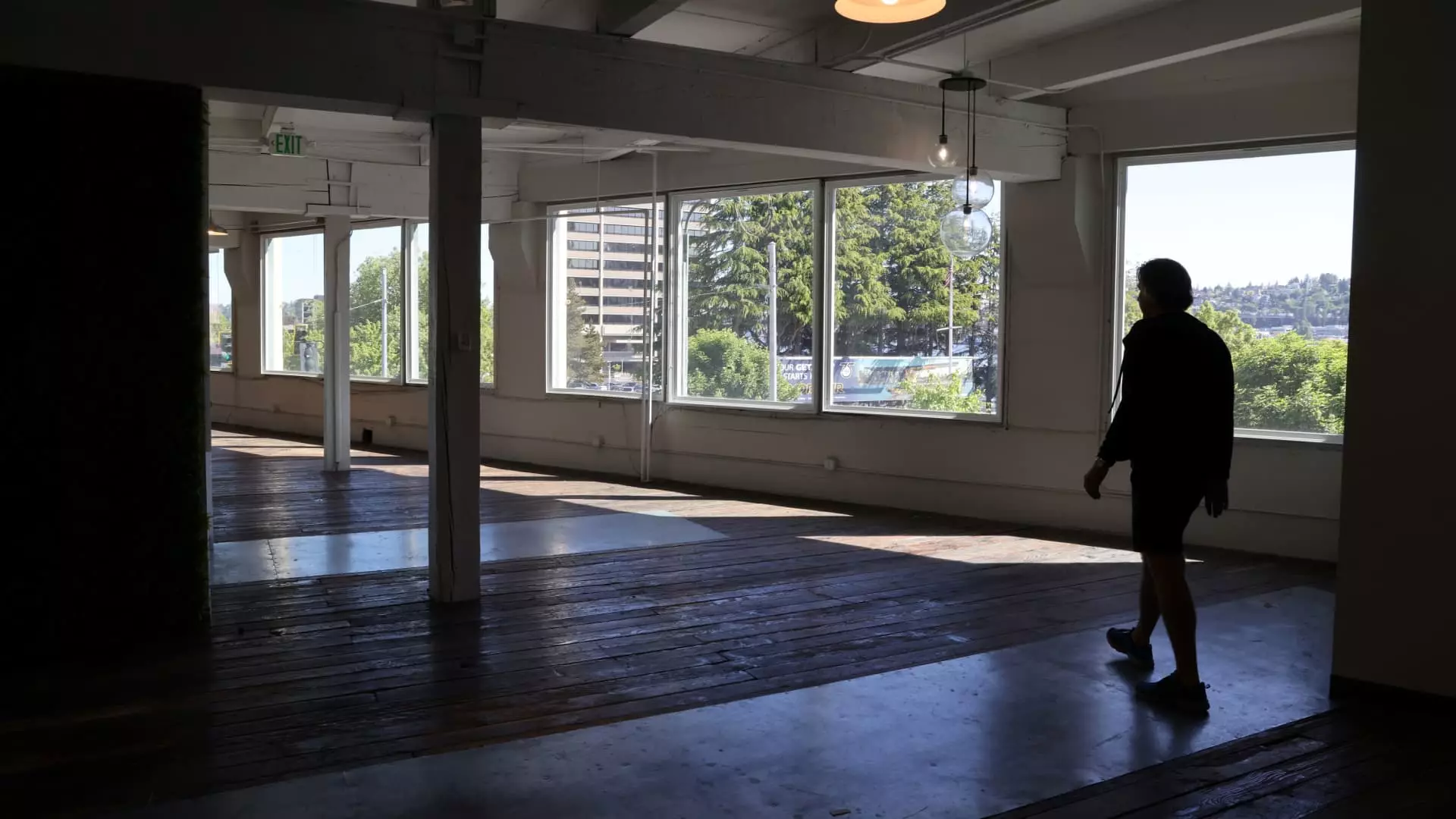The U.S. office market is undergoing a seismic transformation, turning decades of conventional wisdom on its head and challenging our relationship with workspaces. After nearly three years of pandemic-driven disruption, we are witnessing an unprecedented trend where demolitions and conversions of office spaces are outpacing new constructions—a telling sign of changing occupational dynamics. According to exclusive data from CBRE Group, this development marks a historic turning point, one signaling that the traditional office as we know it may ultimately become an outdated concept.
The numbers are staggering: across 58 major U.S. markets, over 23 million square feet of office space is set to either be demolished or converted to alternative uses by year-end, while new constructions total just over 12 million square feet. It’s a stark revelation suggesting that not only are we reassessing the need for vast office complexes, but we are also actively reducing our dependency on them as a society. In a world revaluing flexibility and innovative workplace structures, one cannot help but wonder if these adjustments are resistant symptoms of a broader crisis or the necessary evolution of our urban landscapes.
The Looming Crisis of Obsolescence
The pandemic didn’t merely push office vacancies to record highs; it exposed the obsolescence of traditional office spaces amidst a burgeoning remote work culture. With vacancy rates hovering around 19%, it is evident that the old idea of the workplace is adrift in a sea of change. Many employees now prioritize flexible schedules and telecommuting options over the nine-to-five grind, leading to a pervasive apathy toward returning to in-person work environments.
While there are signs of recovery—such as increased office-leasing activity and positive net absorption—the recovery may be fleeting. Yes, companies may be beckoning their staff back into the fold, but the American worker is now equipped with the knowledge that autonomy is a non-negotiable right. On a grander scale, this shift challenges the very economic structures that revolved around static office spaces, forcing landlords and developers to reevaluate how they can adapt and remain viable in a drastically altered marketplace.
The Haves and Have Nots: Class A Office Dynamics
While some players in the office real estate sector are adapting, not all properties will weather this transition. The market is bifurcating into two distinct classes, with Class A spaces—modern, amenity-rich buildings—seeing their values rebound, while older, less desirable offices fade into obscurity. Major office REITs like Vornado and BXP are thriving in this new landscape, leveraging the appeal of prime locations to attract tenants willing to pay premium rents.
Simultaneously, inefficiencies in older structures create burdens not just for their owners, who find themselves lumbered with mounting maintenance costs, but also for local economies that rely on vibrant, active work environments. The urban fabric suffers when outmoded and vacant office parks become derelict—symbolizing not just fiscal losses but a lack of vision for revitalizing our cities.
Creating Opportunities Amidst Challenges
Though the trend appears threatening, there lies a silver lining in the bane of surplus office space; the opportunity for innovative redevelopment. The surge in office-to-residential conversions—over 33,000 units created since 2016—paves the way for a new era of livable urban environments. As spaces transform to accommodate housing shortages, they also encourage mixed-use developments that fuel local communities and foster greater social connectivity.
Yet, the road ahead is fraught with challenges. While developers are eyeing an additional 85 million square feet for conversions, rising construction costs and diminishing quality of available structures pose legitimate hurdles. As remarked by Mike Watts of CBRE, finding ideal properties for conversion will become increasingly difficult in a recovering economy.
While many celebrate the prospects of a more dynamic marketplace, the existing headwinds cannot be understated. The office landscape is in turmoil, yet active efforts to dismantle what no longer serves us is equally a sign of resilience. The reimagining of workspaces offers fresh opportunities to craft environments conducive not just to productivity but also quality of life.

